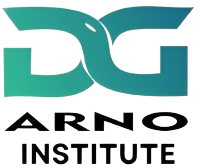Digital Marketing: Definition and Complete Steps
In today’s world, marketing has changed a lot. It’s moved from old-school ads to something called digital marketing. This new way uses the internet, phones, social media, and search engines to promote things and find customers. This article will explain digital marketing in detail. It will cover what it is, why it’s good, and how to make a solid digital marketing plan.

Key Takeaways
- Digital marketing uses digital tools to promote products and find customers.
- It includes many tactics like SEO, social media, and email marketing.
- Good digital marketing can boost a business’s online image, get more people to know about it, and sell more.
- Knowing how to make a complete digital marketing plan is key for any business.
- It’s important to keep checking how well your digital marketing is doing to make better choices and improve your campaigns.
Introduction to Digital Marketing
In today’s world, digital marketing is key for businesses. The internet has changed how we do business. It’s a cost-effective way to connect with people, grow your brand, and sell more.
Understanding the Importance of Digital Marketing
Digital marketing has changed how companies talk to customers. It lets businesses send messages that really speak to their audience. This way, they can improve their marketing based on real data.
Key Benefits of Digital Marketing Strategies
- Increased Reach and Visibility: Digital marketing lets businesses reach more people, even those hard to find offline.
- Targeted Audience Engagement: Digital tools help focus on the right people, making sure messages hit home.
- Measurable Results: Digital marketing gives clear data, helping businesses see what works and what doesn’t.
- Cost-Effectiveness: It’s often cheaper than old-school marketing, with better returns.
- Adaptability and Flexibility: Digital strategies can change fast, helping businesses stay ahead.
Embracing digital marketing opens up new chances for growth. It boosts your brand and helps you succeed online.
What is Digital Marketing and Its Complete Steps
Digital marketing is a big part of today’s business world. It uses digital channels to promote products, services, or brands. It’s a wide range of strategies and tactics to reach and engage with people online.
At its heart, digital marketing is about making, sharing, and checking how well digital content works. This includes SEO, social media, email, and content marketing.
The digital marketing process has several steps:
- Define your goals and objectives: Know what you want to achieve, like more brand awareness or sales.
- Understand your target audience: Learn about your ideal customers’ demographics and preferences.
- Develop a comprehensive digital marketing strategy: Plan how you’ll use SEO, social media, email, and content to reach your audience.
- Create high-quality, engaging content: Make content that’s valuable, informative, and appealing to your audience.
- Optimize and measure your performance: Keep an eye on how well your campaigns are doing and make changes to get better results.
By following these digital marketing steps, businesses can succeed in the digital world. They can connect with their audience in meaningful ways.
Defining Your Digital Marketing Goals
Setting clear digital marketing goals is key to success online. Aligning your digital marketing with your business goals helps guide your efforts. It also lets you track your progress effectively.
To set your digital marketing goals, follow these steps:
- Review your business objectives: Look at your main business goals. See how digital marketing can help. Are you trying to boost brand awareness, get more leads, or increase sales?
- Set SMART goals: Make sure your goals are Specific, Measurable, Achievable, Relevant, and Time-bound. This makes your plan clear and doable.
- Prioritize your goals: Decide which goals are most important for your business. Focus on those first. This helps you use your resources wisely.
- Communicate your goals: Tell your team and stakeholders about your digital marketing goals. This ensures everyone is working towards the same goals.
| Goal | Metric | Target | Timeline |
|---|---|---|---|
| Increase website traffic | Visits | 20% increase | 6 months |
| Generate more leads | Leads generated | 30% increase | 1 year |
| Improve social media engagement | Engagement rate | 15% increase | 3 months |
By defining your digital marketing goals, you align your online efforts with your business. This leads to meaningful results.
“The key to successful digital marketing is to set clear, measurable goals that support your overall business strategy.”
Building a Comprehensive Digital Marketing Strategy
Creating a solid digital marketing strategy is key to success online. It starts with knowing your target audience and choosing the best digital marketing channels to connect with them.
Identifying Your Target Audience
Start by clearly defining your target audience. Learn about their demographics, interests, and what they need. This helps you make content and campaigns that speak to them.
- Conduct market research to gather insights about your target audience
- Create buyer personas to better understand their needs and preferences
- Analyze your current customer base and identify similarities and trends
Selecting the Right Digital Marketing Channels
With a clear picture of your audience, choose the best digital marketing channels. Pick a mix that fits your audience’s likes and your business goals. This ensures a well-rounded digital marketing strategy.
| Digital Marketing Channel | Key Considerations |
|---|---|
| Social Media | Identify the platforms your target audience is most active on (e.g., Facebook, Instagram, LinkedIn) |
| Search Engine Optimization (SEO) | Optimize your website and content to improve visibility in search engine results |
| Email Marketing | Build a targeted email list and create personalized, engaging email campaigns |
| Content Marketing | Develop a content strategy that provides value to your target audience |
By matching your digital marketing strategy with your audience and choosing the right channels, you can create a strong plan. This plan helps you reach your customers and meet your business goals.
Content Creation for Digital Marketing
In the fast-paced world of digital marketing, content is key. It drives engagement, builds brand awareness, and generates leads. Creating engaging, informative, and optimized content is vital for success.
Developing a Content Marketing Plan
To make the most of content creation, a detailed content marketing plan is essential. This plan includes several important steps:
- Define your digital content goals: Know what you want to achieve with your content. This could be increasing brand visibility, generating leads, or educating your audience.
- Identify your target audience: Understand the needs, pain points, and preferences of your audience. This helps you tailor your content effectively.
- Conduct a content audit: Review your current content and find areas for improvement or new content ideas.
- Create a content calendar: Plan and schedule your content. This ensures a steady flow of relevant and timely information.
- Optimize for digital channels: Make your content search engine and social media friendly. This boosts its reach and engagement.
- Monitor and adapt: Keep an eye on your content’s performance. Use data to make necessary adjustments to your strategy.
By following these steps, you can build a strong digital content strategy. This strategy supports your marketing goals effectively.
“Content is the fuel that powers digital marketing. By creating valuable, engaging content, you can attract, educate, and nurture your target audience.”
| Content Type | Purpose | Channels |
|---|---|---|
| Blog Posts | Educate, Inform, and Engage | Website, Social Media |
| Videos | Entertain, Demonstrate, and Inspire | YouTube, Instagram, Facebook |
| Infographics | Visualize Data and Simplify Complex Information | Website, Social Media |
| Whitepapers | Establish Thought Leadership and Expertise | Website, Email |
Investing in a strategic content creation process unlocks digital content’s full potential. It drives meaningful engagement and helps achieve your marketing goals.
Search Engine Optimization (SEO) Tactics
In the digital marketing world, search engine optimization (SEO) is key. It boosts your website’s visibility and ranking on search engine results. By using SEO tactics, you can make your site more visible and attract more organic search traffic.
On-page optimization is a big part of SEO. It makes your website more appealing and relevant to search engines. This includes:
- Doing keyword research to find the best keywords for your audience
- Optimizing page titles, meta descriptions, and headings with your target keywords
- Making sure your website is easy to navigate and crawlable
- Adding relevant images, videos, and multimedia with good alt text and captions
Off-page SEO is also important. It helps build a strong online presence through:
- Getting high-quality backlinks from trusted sites to boost your domain authority
- Being active on social media to increase your brand’s visibility and credibility
- Optimizing for local search by ensuring your business info is correct and consistent online
By using a SEO strategy that includes both on-page and off-page tactics, you can greatly improve your website’s organic search performance. This helps you reach your target audience more effectively.

Remember, search engine optimization is a continuous effort. It needs ongoing monitoring, analysis, and improvement to stay competitive and maintain a strong online presence.
Social Media Marketing Strategies
In today’s digital world, social media is key to any good marketing plan. We’ll look at different social media strategies. We’ll also show how to use popular platforms to connect with your audience.
Leveraging Popular Social Media Platforms
To get the most from social media, pick the right platforms for your business. The top ones are:
- YouTube
Each platform has its own special features. It’s important to know who you’re trying to reach. Choose platforms that match your audience’s likes and habits.
| Social Media Platform | Key Features | Target Audience |
|---|---|---|
| News feed Groups Paid advertising | Wide demographic, primarily adults | |
| Visual-based content Stories Influencer marketing | Primarily younger audience, ages 18-34 | |
| Microblogging Real-time updates Hashtag-driven conversations | Diverse audience, with a focus on news and current events |
Knowing what each platform offers helps you create a strong social media marketing plan. This plan will engage your customers and boost social media engagement.
Email Marketing and Lead Nurturing
Email is still a key tool for businesses to connect with people and boost sales. It helps build strong customer relationships, leading to more sales and loyalty.
To start, you need a good email list. This means making attractive opt-in forms, offering useful content, and using social media to grow your list. After you have a list, you can create engaging email campaigns that speak to your audience.
Lead nurturing is vital in email marketing. It guides potential customers through the sales process. By sending targeted emails, you educate and engage them, turning them into loyal customers. This involves segmenting your list, making messages personal, and automating your campaigns.
To succeed in email marketing, you must know about building lists, creating campaigns, and nurturing leads. By getting good at these, you can use email marketing to enhance your digital marketing and improve lead nurturing and email campaigns.

The secret to great email marketing is to offer value, build trust, and care for your leads. By sending quality content and personalized messages, you can build a loyal customer base and meet your email list building and lead nurturing goals.
| Email Marketing Strategies | Lead Nurturing Tactics |
|---|---|
| Segmentation Personalization Automation A/B testing Abandoned cart emails | Lead scoring Targeted content Automated workflows Retargeting campaigns Valuable offers |
Measuring and Analyzing Digital Marketing Performance
In the fast-paced world of digital marketing, success depends on measuring and analyzing your campaigns. By exploring digital marketing analytics and performance metrics, you can gain valuable insights. These insights help you improve your data-driven marketing strategy and boost your ROI.
Tracking and measuring your campaigns’ success is key to effective digital marketing. You can track website traffic, engagement, lead generation, and conversion rates. This data helps you fine-tune your strategy and reach your business goals.
Key Digital Marketing Performance Metrics to Track
- Website traffic and user behavior (e.g., bounce rate, time on site, pages per session)
- Conversion rates (e.g., lead generation, sales, email sign-ups)
- Social media engagement (e.g., likes, shares, comments, follower growth)
- Email marketing performance (e.g., open rates, click-through rates, unsubscribe rates)
- Return on investment (ROI) for individual campaigns and overall digital marketing efforts
By monitoring these performance metrics closely, you understand what works and what needs improvement. This data-driven approach helps you make informed decisions. It allows you to optimize your digital marketing strategy and refine your campaigns to meet your business goals.
| Metric | Definition | Importance |
|---|---|---|
| Website Traffic | The number of visitors to your website | Indicates the reach and interest in your online presence |
| Conversion Rate | The percentage of website visitors who complete a desired action | Measures the effectiveness of your marketing efforts in driving conversions |
| Social Media Engagement | The level of interaction (likes, shares, comments) with your social media content | Reveals the impact and relevance of your social media marketing efforts |
| Email Open Rate | The percentage of recipients who open your email | Indicates the effectiveness of your email subject lines and content |
| Return on Investment (ROI) | The ratio of the net profit to the cost of the investment | Measures the overall financial performance and impact of your digital marketing initiatives |
By tracking and analyzing these digital marketing performance metrics regularly, you can make informed decisions. This helps you optimize your campaigns and drive long-term business growth through your digital marketing efforts.
“The numbers don’t lie. By focusing on the right performance metrics, you can unlock the true potential of your digital marketing and achieve remarkable results.” – John Doe, Digital Marketing Strategist
Conclusion
Digital marketing is more important than ever in today’s fast-changing world. This article has covered the basics of digital marketing. It has given you the tools and strategies you need to succeed online.
From learning what digital marketing is to understanding how to use it, this guide has it all. It shows you how to navigate the digital world effectively.
Digital marketing is now key to business success. It helps businesses use SEO, social media, email, and data to reach their audience. This way, they can improve their online presence and meet their goals.
The best practices for digital marketing shared here are a guide for businesses of all sizes. They help you make smart choices, keep up with trends, and stay competitive.
FAQ
What is digital marketing and why is it important?
Digital marketing uses digital tools like the internet and social media to promote products. It’s key for businesses because it’s targeted, measurable, and cost-effective. It helps reach a wide audience.
What are the key benefits of digital marketing?
Digital marketing boosts reach and targeting. It improves customer engagement and offers precise analytics. It’s also cheaper than traditional marketing.
What are the main steps involved in developing a digital marketing strategy?
To create a digital marketing strategy, start by setting your goals. Then, know your audience and choose the right channels. Make engaging content and use SEO and social media.
Finally, track and analyze your results.
How do I define my digital marketing goals?
Align your digital marketing goals with your business objectives. Make sure they are specific, measurable, achievable, relevant, and time-bound (SMART). Focus on the most important goals.
How do I identify my target audience for digital marketing?
Gather data on your ideal customers. Create buyer personas and understand their needs and behaviors. This helps tailor your strategies.
What are the key digital marketing channels I should consider?
Key channels include SEO, social media, email marketing, content marketing, and paid ads. Also, consider mobile marketing like SMS and in-app ads.
How do I create effective content for digital marketing?
Develop a content marketing plan. Create valuable, engaging content that meets your audience’s needs. Optimize for search engines and distribute through digital channels.
What are the essential SEO tactics I should implement?
Focus on on-page optimization like keyword research and meta tags. Also, do off-page optimization with link building and social media signals. Improve your site’s technical aspects and adapt to search engine changes.
How can I effectively leverage social media marketing?
Choose the right social media platforms for your business. Create content that resonates with your audience. Engage with followers and use influencer marketing. Measure your campaign’s success.
What are the key metrics I should track to measure digital marketing performance?
Track website traffic, bounce rate, and conversion rate. Also, monitor customer acquisition cost, ROI, email open rates, and social media engagement. These metrics help measure your success.

